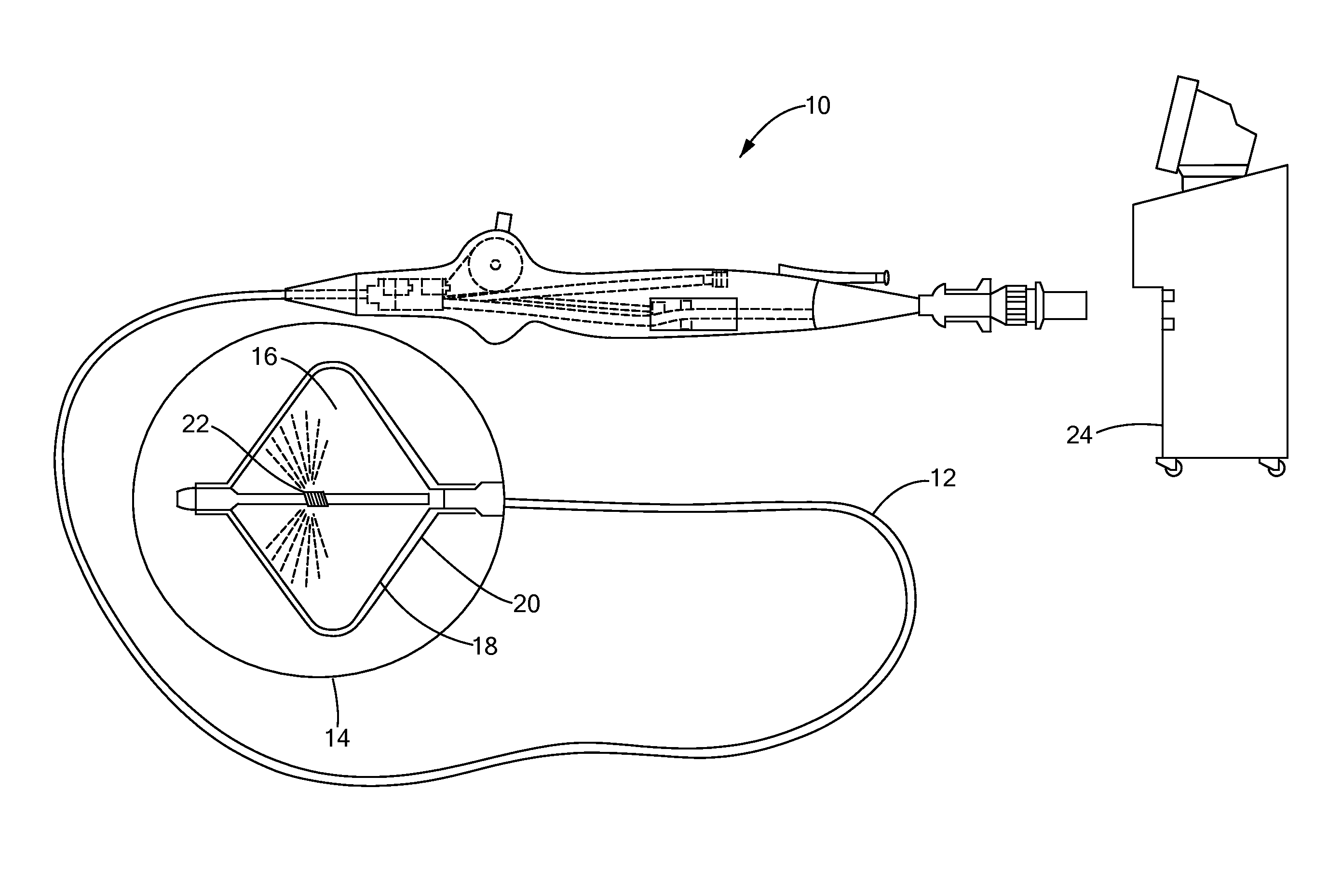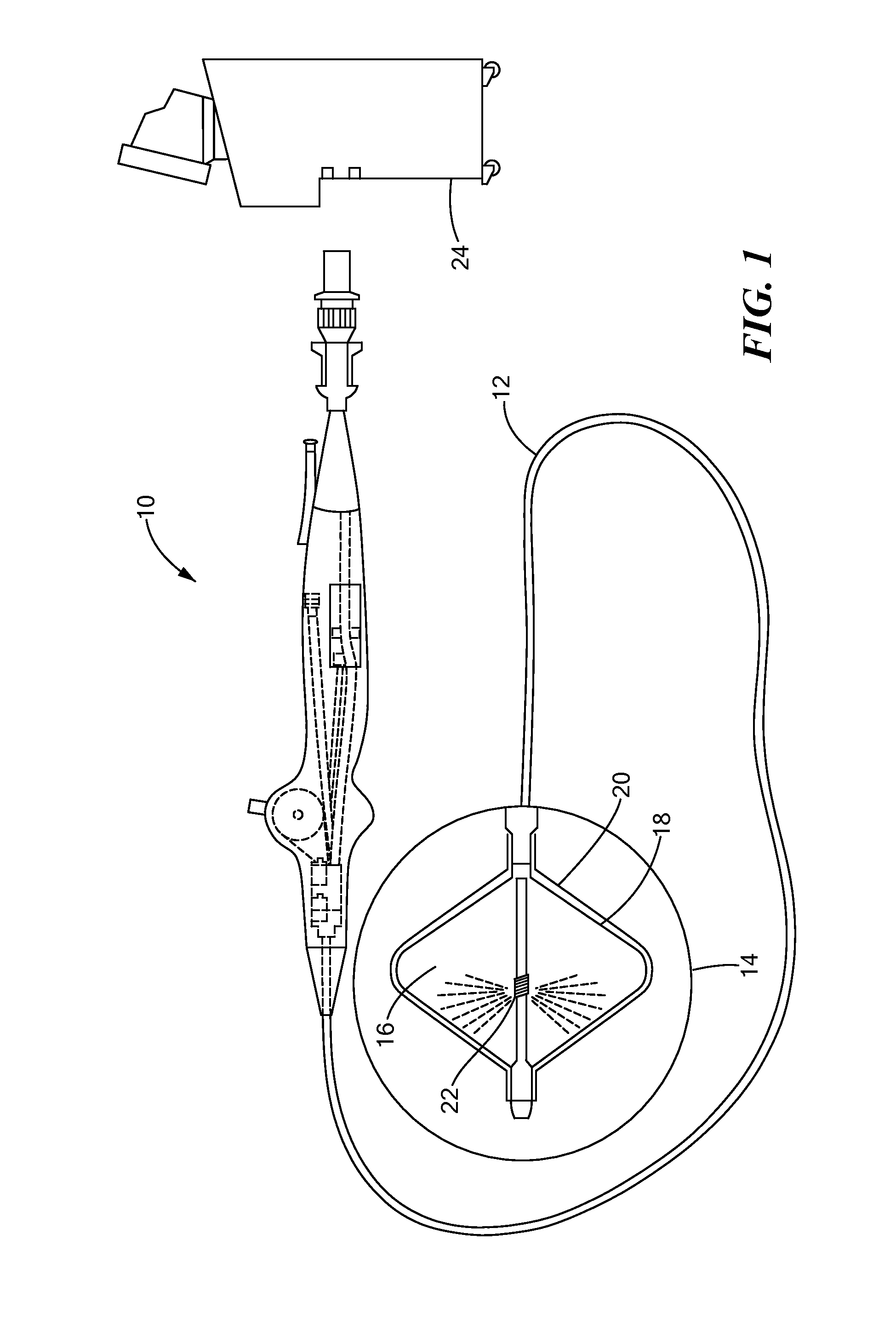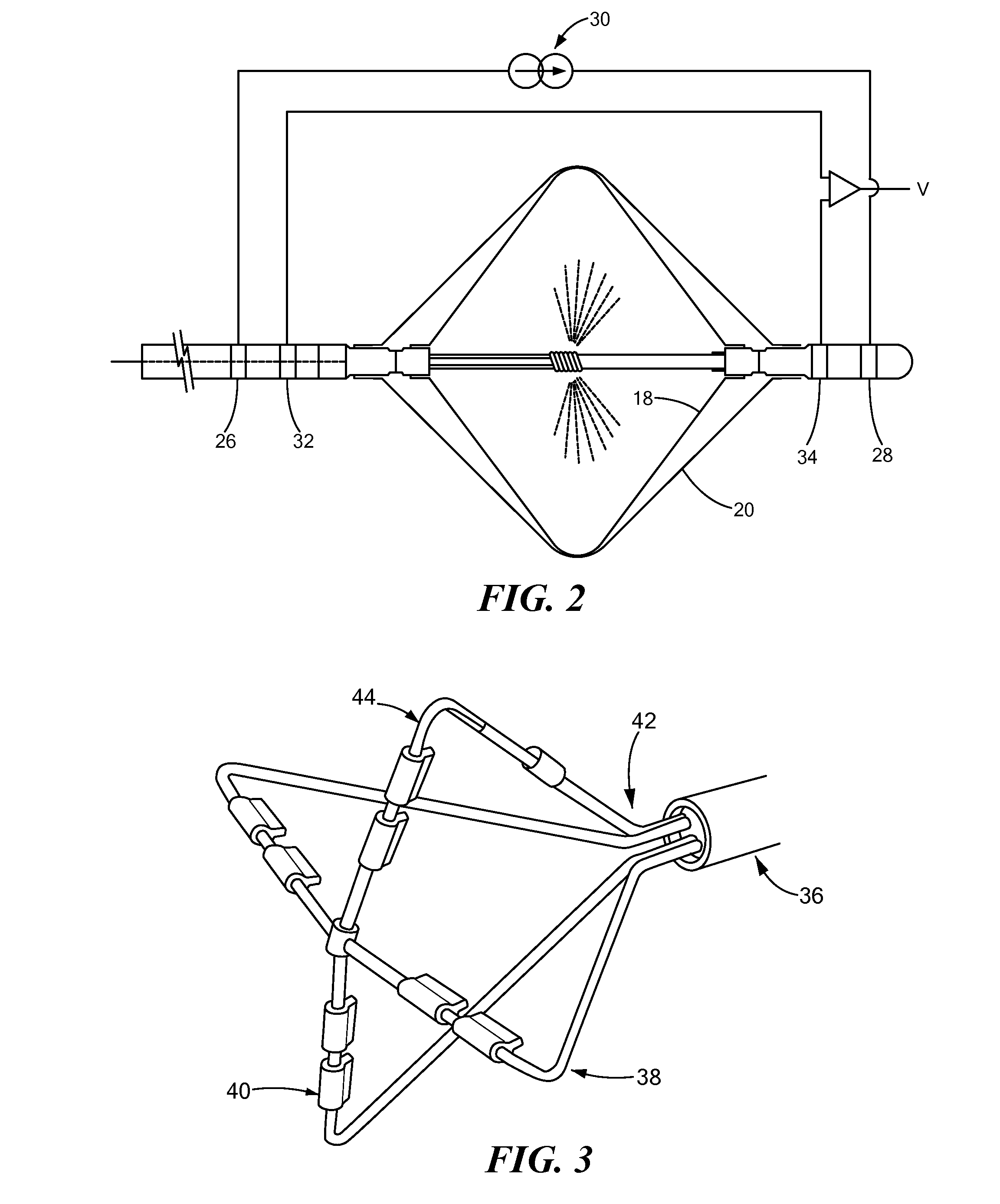Reactance changes to identify and evaluate cryo ablation lesions
a cryo-ablation and reaction change technology, applied in the field of reaction changes to identify and evaluate cryo-ablation lesions, can solve the problems of lack of direct feedback, impedance measurement alone, and inability to provide real-time assessment of whether a cryogenic or rf lesion is presen
- Summary
- Abstract
- Description
- Claims
- Application Information
AI Technical Summary
Benefits of technology
Problems solved by technology
Method used
Image
Examples
Embodiment Construction
[0021]Now referring to the figures in which like reference designators refer to like elements, there is shown in FIG. 1 an exemplary medical system and device used for exchanging cryogenic ablation energy and used in accordance with an exemplary method of the present invention and designated generally as “10.” The medical device 10 may be an elongate, highly flexible and deflectable cryogenic ablation catheter that is suitable for passage through the vasculature or to be applied epicardially through a surgical incision. The medical device 10 may further include a catheter body 12 having a distal end 14 with a thermally conductive region 16 at or proximal to the distal end 14.
[0022]The thermally conductive region 16 is shown in FIG. 1 and FIG. 2 as a double balloon having a first membrane (e.g., inner balloon) 18 contained or enclosed within a second membrane (e.g., outer balloon) 20. The thermally conductive region 16 may include a single balloon, multiple balloons in series, and / or...
PUM
 Login to View More
Login to View More Abstract
Description
Claims
Application Information
 Login to View More
Login to View More - R&D
- Intellectual Property
- Life Sciences
- Materials
- Tech Scout
- Unparalleled Data Quality
- Higher Quality Content
- 60% Fewer Hallucinations
Browse by: Latest US Patents, China's latest patents, Technical Efficacy Thesaurus, Application Domain, Technology Topic, Popular Technical Reports.
© 2025 PatSnap. All rights reserved.Legal|Privacy policy|Modern Slavery Act Transparency Statement|Sitemap|About US| Contact US: help@patsnap.com



